India
All Destinations
India
Not so much a country as a continent, India is an assault on the senses: spices, colours, palaces, temples, bustle and a magic hard to articulate. India is the sort of place you dream of visiting but with only limited time, where do you start?
Rajasthan boasts the archetypal introduction, with its famous cities, forts and palaces; Kerala is an altogether more relaxed state with rolling green hills and sleepy backwaters; and the country is crowned by the majestic Himalayas, showcasing the most spectacular vistas in the world.
India offers some of the most extraordinary places to stay, from beautifully converted forts and palaces to low-key lodges and camps. There are phenomenal diamonds in the rough when it comes to accommodation and there are styles to suit every pocket.
Some travel to India for its culture; some for its architecture; some for spiritual insight; and some simply to get away from it all. Whatever you are after we will guide you through the options and make sure you get the most out of your time.
Quick Facts
Capital
New Delhi
Population
1.3 billion
Area
3.1 million sq km (1.2 million sq miles), excluding Kashmir
Major Languages
Hindi, English and more than 20 other official languages
Major religion
Hinduism, Islam, Christianity, Sikhism, Buddhism
Monetary Unit
Rupee
Flight time from London
8.5 hours
Time Difference
GMT + 5.5
When to go
India’s size and wide variety of terrain makes for a wide variety of climatic conditions.
These range from permanent snowfields to tropical coastlands; from areas of virtual desert in the northwest plains to fertile, intensively cultivated rice fields in the northeast.
The climate of India is dominated by the great wind system known as the Asiatic monsoon. This is completely unlike the prevailing wind system that operates in many countries, i.e., a wind that prevails from the same direction throughout the year.
The monsoon reverses direction at certain times of the year. For some months it will blow steadily from the southwest; for other months, from the northeast.
From June to October the country is influenced by the moist, rain-bearing monsoon from the southwest. On some mountain ranges, facing the sea, rainfall can be very heavy indeed.
The coolest, driest time over most of the country is from December to February, when light northerly winds bring clear skies and little rain. From March to May the climate becomes hotter and hotter and the drought continues. The rains only come when the wind turns again to the southwest.
On average, the arrival of the rains – the ‘burst of the monsoon’, as it is called – comes to the south of India during late May or early June.
It will reach the north about six weeks later. In some years, the rains will be torrential; in other years they may be light or locally variable, in which case the monsoon will be said to have ‘failed’ referring to the poor results for food crops.
- J
- F
- M
- A
- M
- J
- J
- A
- S
- O
- N
- D
- High Season
- Mid Season
- Shoulder Season
Highlights

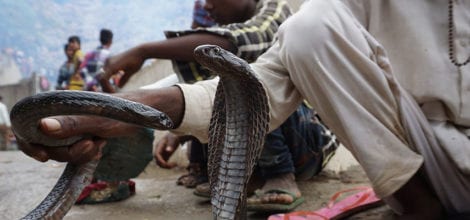




Central India
Maharashtra stretches from the gorgeous greens of the little-known Konkan Coast right into the parched innards of India’s beating heart. Within this massive framework are all the sights, sounds, tastes, and experiences of India.
More than just a gateway to Goa, Mumbai is a place that takes eating, drinking and making merry seriously. Explore glorious Gothic architecture, munch on street-eats galore and party hard in this sizzling-hot city beside the sea.
Head north to Nasik, a city of crashing colours, timeless ritual and Hindu legend. Further south, the old maharajas’ palaces, wrestling pits and overwhelming temples of Kolhapur make for one of the best introductions to India anyone could want.
But it’s the centre, with its treasure house of architectural and artistic wonders, topped by the World Heritage-listed cave temples of Ellora and Ajanta, that really steals the show.
In Madhya Pradesh, Khajuraho, Mandu and Sanchi have some of India’s finest Hindu, Islamic and Buddhist monuments. A more lively form of religion is at the ghats (steps or landings) on the Narmada River, one of the seven sacred rivers.
There’s also Ujjain, one of the seven holy cities, and the holy island Omkareshwar. Historical sites include the millennia-old Bhimbetka rock paintings and Gwalior’s lavish Jai Vilas Palace. Among the temple towns, Khajuraho is famous for the erotic carvings writhing across its 10th-century temples.
Another historical hotspot near the Agra–Varanasi route is secluded Orchha, where riverside cenotaphs and palaces exude a ‘lost world’ atmosphere matched only by Mandu’s plateau-top tombs.
For outdoor enthusiasts there are 1000m-plus peaks, forests and waterfalls at hill station Pachmarhi, and tiger-filled national parks. View the cats from an elephant at Kanha, Bandhavgarh, Panna (site of Kipling’s Jungle Book) and Pench. The distinctive craftwork and colourful markets in Chhattisgarh’s Bastar region show tribal communities keeping tradition alive.





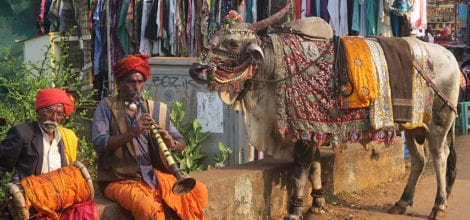

Goa
Colourful and colliding, spiritual and soothing, crammed with deserted beaches, yogic bliss and heady nightlife. Goa is many things to many people, but everyone agrees: there’s nowhere on earth quite like it.
Legendary beaches, strung in a shimmering gold strand from the tip to the toe of the state, cater to every possible tropical whim: choose from happy, hippy Arambol or bolder, brasher Baga; from the lively sands of Palolem, or lovely, laid-back Mandrem.
For the spiritual, silent Vipassana retreats, sunrise t’ai chi sessions, reiki healing courses and just about every other form of spiritual exploration abound. By far the most popular of myriad regimes on offer is ayurveda, the ancient science of plant-based medicine; second only to ayurveda comes yoga.
Throughout every waking hour, the scents and flavours of Goa’s cuisine will rarely elude you. Be enchanted by many Portuguese-influenced dishes, from a bhaji-pau (bread roll dipped in curry) at breakfast time to a lip-smacking vindahlo, with its infusions of wine vinegar and garlic. Enjoy the traditional lunchtime repast of zingy fish-curry-rice, all washed down with a local beer.
The indelible mark of the Portuguese conquerors is still evident in the state’s baroque architecture, crumbling forts, colourful Catholic ceremonies, mournful fado music and culinary quirkiness. Combine this heritage with a modern Hindu majority, migrant workers from as far afield as Nepal and Kashmir, and a whole calendar full of happy, heady festivals, and you have the ingredients that make Goa one truly mesmerising melting pot.



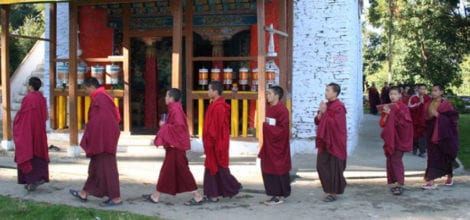
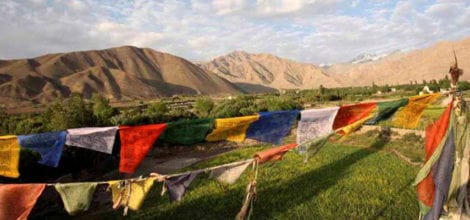






Himalaya
Containing most of the highest mountains in the world the Himalayas span ten states of India as well as Nepal, Bhutan, China and Pakistan.
Responsible for providing water to a large part of the Indian subcontinent, the region’s residents have developed their own highly independent and enclosed cultures connected by the hallowed paths of the steep hills.
Best visited in the summer, Ladakh is populated mostly by adherents of Tibetan Buddhism and boasts numerous villages dominated by venerable monasteries.
In the lower foothills you’ll discover former colonial hill stations such as Shimla, with its curious, appealing mix of grand homes, churches and chaotic bazaars, together with breathtaking views.
Tucked between Nepal and Bhutan, the former Kingdom of Sikkim is a perfect place for those keen to enjoy off-the-beaten-track trekking and discover the regions many monasteries, while further south you will find the numerous tea estates and colonial hotels of Darjeeling.
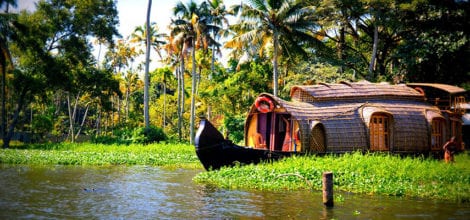








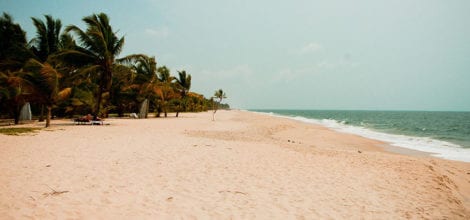



Kerala
Kerala is known as a tropical paradise of waving palms and wide sandy beaches.
A narrow strip of coastal territory, Kerala slopes down the Western Ghats in a cascade of lush green vegetation, and reaches to the Arabian Sea. Bordering the states of Tamil Nadu to the east and Karnataka to the north, Kerala is also known for its backwaters, mountains, coconuts, spices and art forms like Kathakali and Mohini Attam. It is the most literate state in India, and a land of diverse religions, where you can find Hindu temples, mosques, churches, and even synagogues while terrain ranges from beautiful, high altitude blue mountains to pristine rain forests to golden sun-sand beaches.
Visit Malabar, famous for its heritage, spices, textiles and food, Malabar is one of India’s most notable historical regions. Central Kerala is the largest urban agglomeration of Kochi, the cultural heart of Kerala-Thrissur, and boasts the food basket of Kerala-Palakkad .
Central Travancore is home to Kerala’s stunning backwaters and infamous house boats, a land of churches, latex and literacy. The Northern Travancore is known for its mountains, hill stations, and plantations of spices, tea and coffee while the Southern Travancore is home to the capital city, Trivandrum, various monuments, large temples, churches, and sporting events.
Blessed with great natural beauty, and diverse ecology, it’s easy to see why many claim Kerala as God’s Own Country.



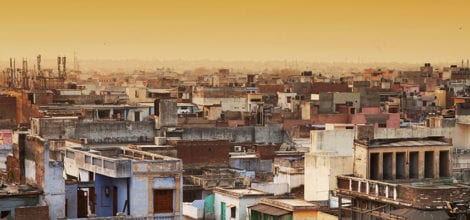






Rajasthan & Beyond
Known as “the land of kings”, Rajasthan boasts a feast of rich colour, glorious opulence and magical history and is often considered to be the cultural heart of India.
An ancient patchwork of kingdoms, reveals the magnificent Rajput , tribal traditions, awe-inspiring architecture and wondrous wildlife, all within the north west of India.
From the inhospitable, yet enchanting Thar Desert and remote, welcoming villages, to the bustling cities of Jodhpur, Jaipur and Udaipur, their royal palaces now welcoming you as their guests, this is a land of variety and mystical encounters.
Ride across the desert on beautiful Marwari horses, and partake in an opium ceremony with the Bishnoi tribe. Luxuriate in the gardens’ of the historical Maharanis and explore the extraordinary array of impressive temples and shimmering palaces.
Spot the elusive tiger in one of two national tiger reserves and enjoy the hospitality of the rural heartlands with local markets and a way of life that hasn’t changed in centuries.
Visit the planet’s greatest testament to love, the magnificent Taj Mahal and lose yourself in the myriad of cultural influences that make up Old and New Dehli.




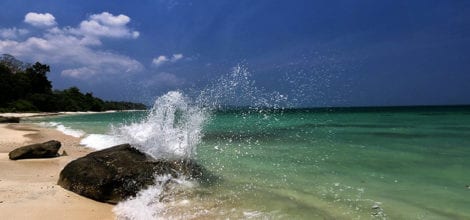
Tamil Nadu & The Andaman Islands
If thoughts of temples and tigers appeal, then Tamil Nadu – land of the Tamils and heartland of southern India – is the place to be while the beautiful beaches of the Andaman Island get you off the tourist trail.
Long coastlines and forested mountains form stunning backdrops to this, the cradle of Dravidian civilisation. Manifestations of its ancient culture are everywhere, from vast temple compounds with steeply stepped, riotously coloured gopurams (gateway towers) to beautifully detailed rock carvings, and classical music and dance that are both complex and compelling.
Pilgrims pour into the ancient sites of Kanchipuram, Chidambaram, Kumbakonam, Trichy (Tiruchirappalli), Thanjavur (Tanjore), Madurai, Kanyakumari and Rameswaram – far outnumbering tourists.
While only the very lucky few will see a tiger, the state’s national parks and reserves remain important refuges for much of India’s wildlife including elephants, several species of rare monkeys and gaurs (a type of bison).
The historic hill stations of Ooty (Udhagamandalam), reached by the famous miniature train, and Kodaikanal are perfect bases for exploring and provide cool, calm, green contrast to the bustle of the cities.
The beautiful beaches of the Andaman Islands are located between India and Thailand. Flights from Chennai land into Port Blair after which a boat will take you to one of the outlying islands. Not widely visited and off the mainstream tourist trail The Andaman Islands boast thick forests and untouched coral make this a truly compelling destination.

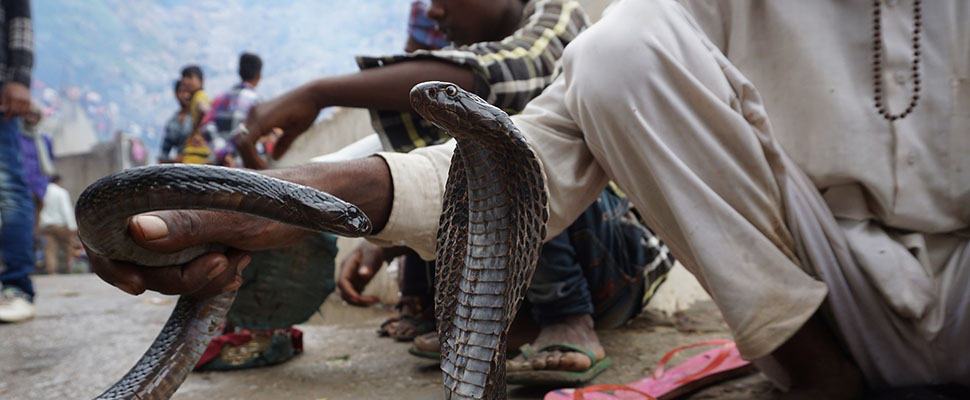

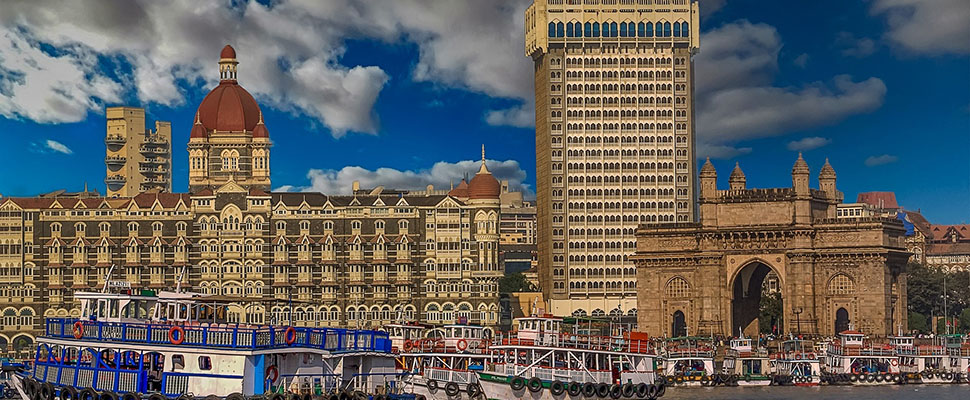


Central India
Maharashtra stretches from the gorgeous greens of the little-known Konkan Coast right into the parched innards of India’s beating heart. Within this massive framework are all the sights, sounds, tastes, and experiences of India.
More than just a gateway to Goa, Mumbai is a place that takes eating, drinking and making merry seriously. Explore glorious Gothic architecture, munch on street-eats galore and party hard in this sizzling-hot city beside the sea.
Head north to Nasik, a city of crashing colours, timeless ritual and Hindu legend. Further south, the old maharajas’ palaces, wrestling pits and overwhelming temples of Kolhapur make for one of the best introductions to India anyone could want.
But it’s the centre, with its treasure house of architectural and artistic wonders, topped by the World Heritage-listed cave temples of Ellora and Ajanta, that really steals the show.
In Madhya Pradesh, Khajuraho, Mandu and Sanchi have some of India’s finest Hindu, Islamic and Buddhist monuments. A more lively form of religion is at the ghats (steps or landings) on the Narmada River, one of the seven sacred rivers.
There’s also Ujjain, one of the seven holy cities, and the holy island Omkareshwar. Historical sites include the millennia-old Bhimbetka rock paintings and Gwalior’s lavish Jai Vilas Palace. Among the temple towns, Khajuraho is famous for the erotic carvings writhing across its 10th-century temples.
Another historical hotspot near the Agra–Varanasi route is secluded Orchha, where riverside cenotaphs and palaces exude a ‘lost world’ atmosphere matched only by Mandu’s plateau-top tombs.
For outdoor enthusiasts there are 1000m-plus peaks, forests and waterfalls at hill station Pachmarhi, and tiger-filled national parks. View the cats from an elephant at Kanha, Bandhavgarh, Panna (site of Kipling’s Jungle Book) and Pench. The distinctive craftwork and colourful markets in Chhattisgarh’s Bastar region show tribal communities keeping tradition alive.



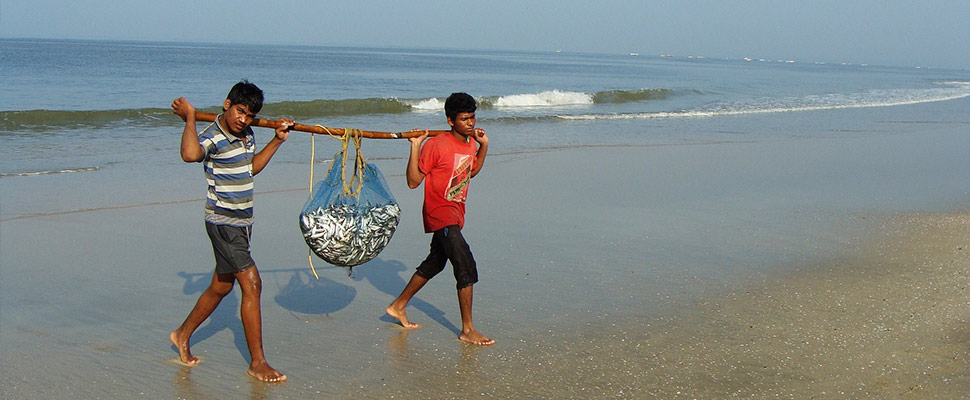

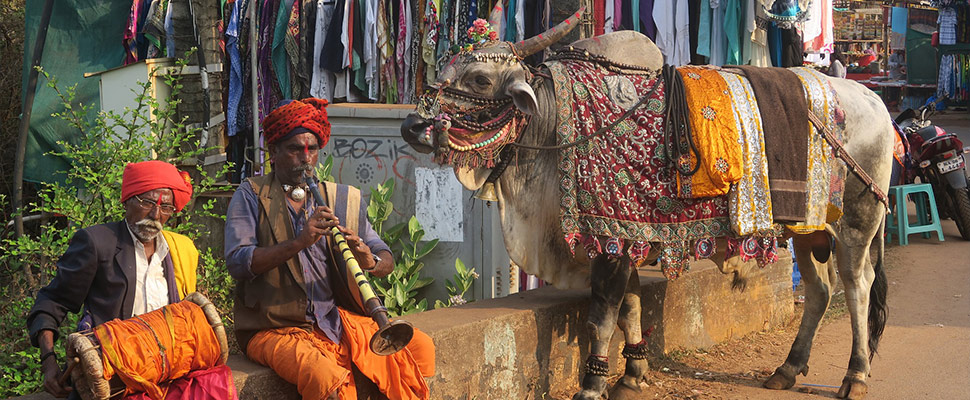
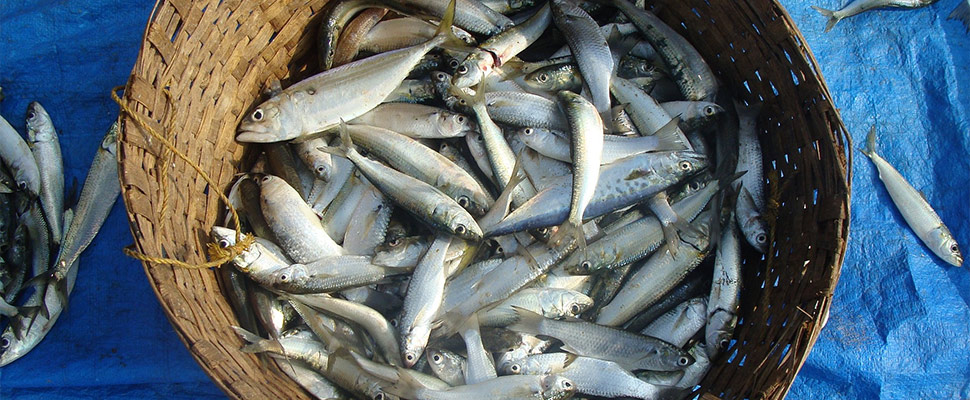
Goa
Colourful and colliding, spiritual and soothing, crammed with deserted beaches, yogic bliss and heady nightlife. Goa is many things to many people, but everyone agrees: there’s nowhere on earth quite like it.
Legendary beaches, strung in a shimmering gold strand from the tip to the toe of the state, cater to every possible tropical whim: choose from happy, hippy Arambol or bolder, brasher Baga; from the lively sands of Palolem, or lovely, laid-back Mandrem.
For the spiritual, silent Vipassana retreats, sunrise t’ai chi sessions, reiki healing courses and just about every other form of spiritual exploration abound. By far the most popular of myriad regimes on offer is ayurveda, the ancient science of plant-based medicine; second only to ayurveda comes yoga.
Throughout every waking hour, the scents and flavours of Goa’s cuisine will rarely elude you. Be enchanted by many Portuguese-influenced dishes, from a bhaji-pau (bread roll dipped in curry) at breakfast time to a lip-smacking vindahlo, with its infusions of wine vinegar and garlic. Enjoy the traditional lunchtime repast of zingy fish-curry-rice, all washed down with a local beer.
The indelible mark of the Portuguese conquerors is still evident in the state’s baroque architecture, crumbling forts, colourful Catholic ceremonies, mournful fado music and culinary quirkiness. Combine this heritage with a modern Hindu majority, migrant workers from as far afield as Nepal and Kashmir, and a whole calendar full of happy, heady festivals, and you have the ingredients that make Goa one truly mesmerising melting pot.


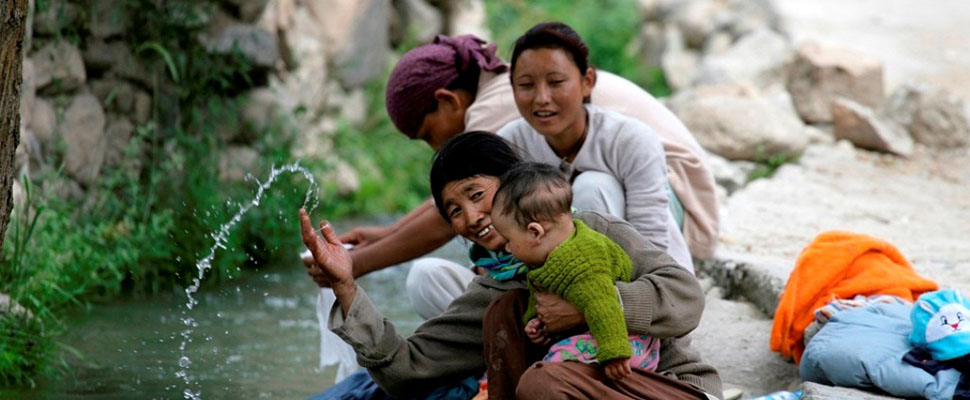





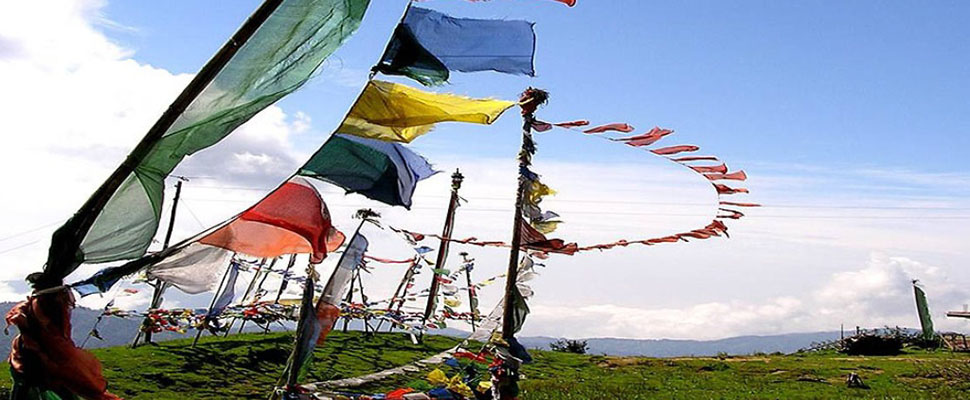

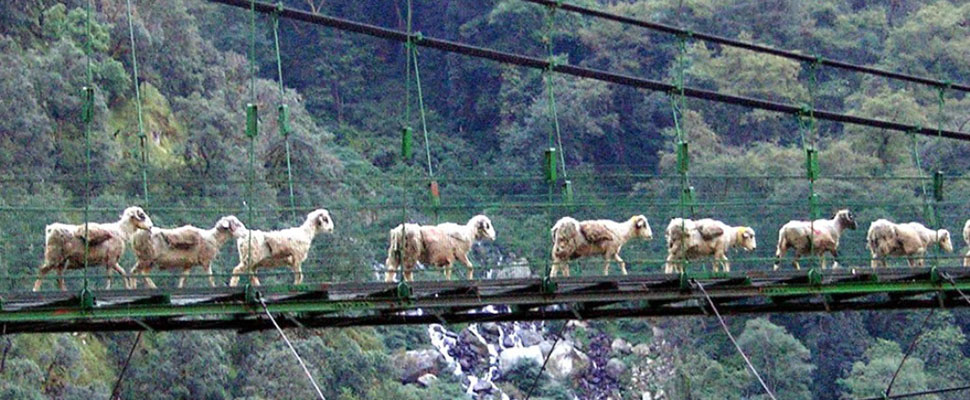
Himalaya
Containing most of the highest mountains in the world the Himalayas span ten states of India as well as Nepal, Bhutan, China and Pakistan.
Responsible for providing water to a large part of the Indian subcontinent, the region’s residents have developed their own highly independent and enclosed cultures connected by the hallowed paths of the steep hills.
Best visited in the summer, Ladakh is populated mostly by adherents of Tibetan Buddhism and boasts numerous villages dominated by venerable monasteries.
In the lower foothills you’ll discover former colonial hill stations such as Shimla, with its curious, appealing mix of grand homes, churches and chaotic bazaars, together with breathtaking views.
Tucked between Nepal and Bhutan, the former Kingdom of Sikkim is a perfect place for those keen to enjoy off-the-beaten-track trekking and discover the regions many monasteries, while further south you will find the numerous tea estates and colonial hotels of Darjeeling.


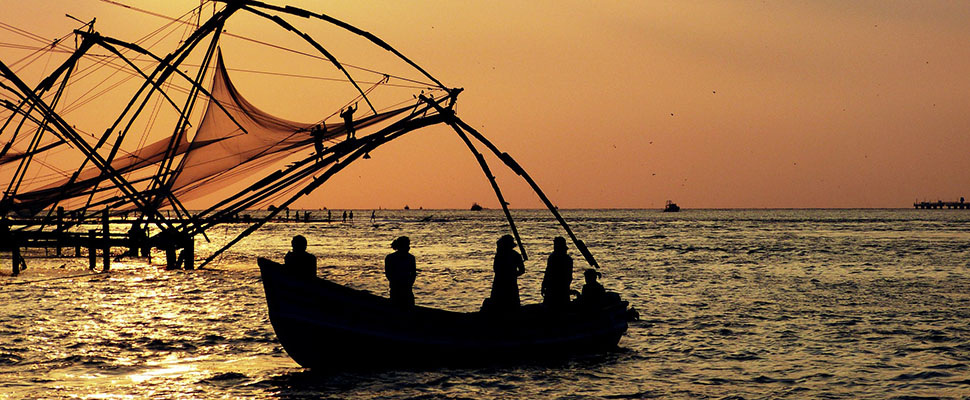


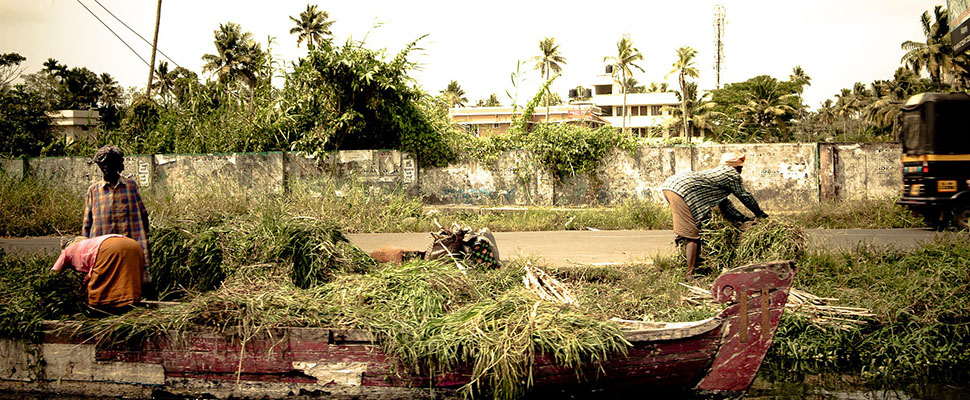
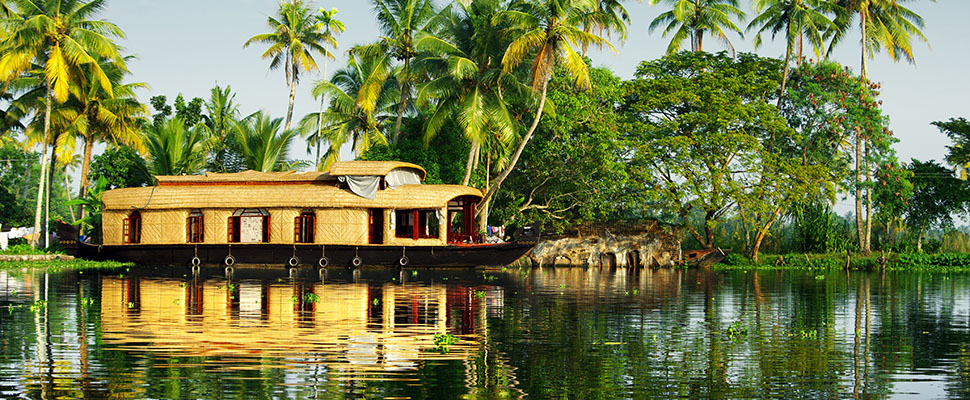


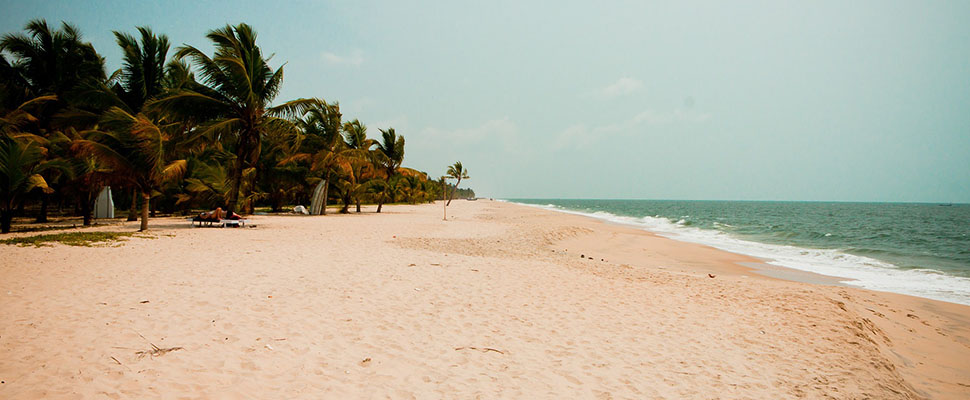



Kerala
Kerala is known as a tropical paradise of waving palms and wide sandy beaches.
A narrow strip of coastal territory, Kerala slopes down the Western Ghats in a cascade of lush green vegetation, and reaches to the Arabian Sea. Bordering the states of Tamil Nadu to the east and Karnataka to the north, Kerala is also known for its backwaters, mountains, coconuts, spices and art forms like Kathakali and Mohini Attam. It is the most literate state in India, and a land of diverse religions, where you can find Hindu temples, mosques, churches, and even synagogues while terrain ranges from beautiful, high altitude blue mountains to pristine rain forests to golden sun-sand beaches.
Visit Malabar, famous for its heritage, spices, textiles and food, Malabar is one of India’s most notable historical regions. Central Kerala is the largest urban agglomeration of Kochi, the cultural heart of Kerala-Thrissur, and boasts the food basket of Kerala-Palakkad .
Central Travancore is home to Kerala’s stunning backwaters and infamous house boats, a land of churches, latex and literacy. The Northern Travancore is known for its mountains, hill stations, and plantations of spices, tea and coffee while the Southern Travancore is home to the capital city, Trivandrum, various monuments, large temples, churches, and sporting events.
Blessed with great natural beauty, and diverse ecology, it’s easy to see why many claim Kerala as God’s Own Country.

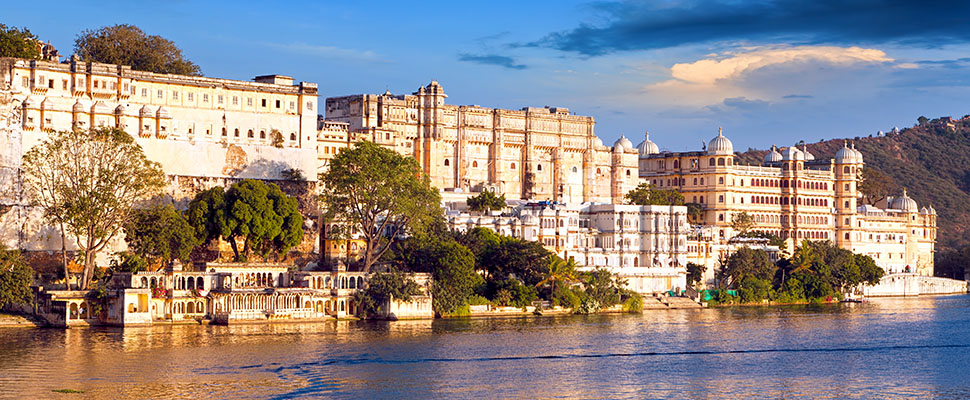
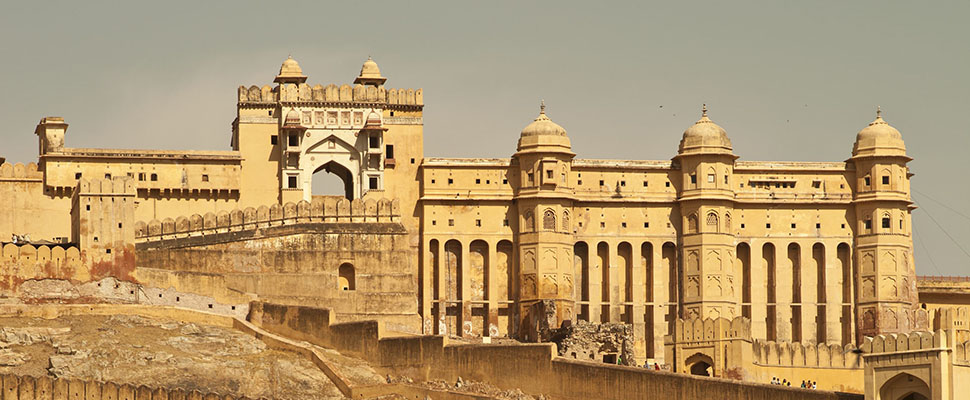



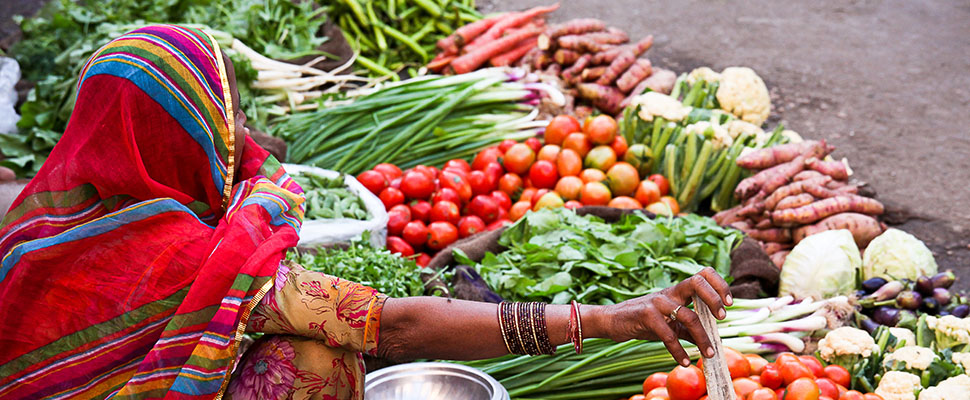



Rajasthan & Beyond
Known as “the land of kings”, Rajasthan boasts a feast of rich colour, glorious opulence and magical history and is often considered to be the cultural heart of India.
An ancient patchwork of kingdoms, reveals the magnificent Rajput , tribal traditions, awe-inspiring architecture and wondrous wildlife, all within the north west of India.
From the inhospitable, yet enchanting Thar Desert and remote, welcoming villages, to the bustling cities of Jodhpur, Jaipur and Udaipur, their royal palaces now welcoming you as their guests, this is a land of variety and mystical encounters.
Ride across the desert on beautiful Marwari horses, and partake in an opium ceremony with the Bishnoi tribe. Luxuriate in the gardens’ of the historical Maharanis and explore the extraordinary array of impressive temples and shimmering palaces.
Spot the elusive tiger in one of two national tiger reserves and enjoy the hospitality of the rural heartlands with local markets and a way of life that hasn’t changed in centuries.
Visit the planet’s greatest testament to love, the magnificent Taj Mahal and lose yourself in the myriad of cultural influences that make up Old and New Dehli.





Tamil Nadu & The Andaman Islands
If thoughts of temples and tigers appeal, then Tamil Nadu – land of the Tamils and heartland of southern India – is the place to be while the beautiful beaches of the Andaman Island get you off the tourist trail.
Long coastlines and forested mountains form stunning backdrops to this, the cradle of Dravidian civilisation. Manifestations of its ancient culture are everywhere, from vast temple compounds with steeply stepped, riotously coloured gopurams (gateway towers) to beautifully detailed rock carvings, and classical music and dance that are both complex and compelling.
Pilgrims pour into the ancient sites of Kanchipuram, Chidambaram, Kumbakonam, Trichy (Tiruchirappalli), Thanjavur (Tanjore), Madurai, Kanyakumari and Rameswaram – far outnumbering tourists.
While only the very lucky few will see a tiger, the state’s national parks and reserves remain important refuges for much of India’s wildlife including elephants, several species of rare monkeys and gaurs (a type of bison).
The historic hill stations of Ooty (Udhagamandalam), reached by the famous miniature train, and Kodaikanal are perfect bases for exploring and provide cool, calm, green contrast to the bustle of the cities.
The beautiful beaches of the Andaman Islands are located between India and Thailand. Flights from Chennai land into Port Blair after which a boat will take you to one of the outlying islands. Not widely visited and off the mainstream tourist trail The Andaman Islands boast thick forests and untouched coral make this a truly compelling destination.
Where to stay
These are just a selection of the properties we can personally recommend. Please get in touch to hear more about our full portfolio.
Alila Diwa Goa
Set amidst the serene landscape of lush, verdant rice plantations flowing towards the Arabian Sea, relaxation reigns at this Goa resort.
Discovery House Boat
Discovery has totally transformed cruising the backwaters of Kerala and has taken it to another league in terms of style and comfort.
Mahua Kothi
Mahua Kothi or homestead is named after the Mahua tree which is prized and revered in the region. 12 standalone luxury cottages blend into a 45 acre private forest on the periphery of the national park.
RAAS Devigarh
Devigarh invites visitors to experience this outstanding heritage property which has been transformed into one of the premier five star hotels in Rajasthan.
Shakti Himalaya
Shakti Himalaya is, perhaps, the most visionary, innovative, luxurious and exclusive Himalayan product in existence. For those who seek space, peace and natural beauty, Shakti offers a rare opportunity to discover compellingly beautiful and remote regions of India.
Taj Lake Palace
What may have begun as a creation born of a prince’s rebellious gesture was turned into one of the most romantic hotels in the world.
Get in touch with us now to start planning your journey
Follow Us
Proudly ASSOCIATED WITH













